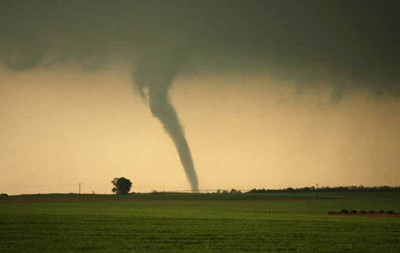They're technically called tropical cyclones.
严格上来说它们的名字叫做热带飓风。
But these powerful storms are better known as hurricanes in the U.S. and typhoons in Asia.
但是这些强力风暴在美国被认为是飓风,而在亚洲则被当作台风。
The violent weather systems wreak havoc on coastlines and islands in tropical areas, as the name implies.
正如名字所表达出的,这种极端恶劣天气会对热带地区的海岸线和岛屿造成巨大的破坏。
But it looks like tropical cyclones may be moving into areas not currently considered tropical, when the storms reach maximum strength.
但是看起来当它的强度达到最大时,热带飓风可以肆虐到热带以外的地区。
That's according to a study in the journal Nature.
这是根据《自然》杂志上的一篇研究得出的结论。

Researchers looked at the global record of tropical cyclones since the 1970s.
研究人员们观察了20世纪70年代以来的全球热带飓风的活动记录。
That's when such storms started to be reliably monitored by satellites.
这都是当这些风暴开始形成时卫星记录下的可靠数据,
Using those data, the researchers pinpointed the place on the globe where each storm reached its maximum intensity.
他们精确定位了每个风暴到达最大强度时在地球上所处的位置。
The record reveals that peak cyclone location has been shifting toward both poles at a rate of about 35 miles per decade, roughly one-half a degree of latitude.
该记录还显示强度到达极限时的飓风位置已经以每10年35公里的速度向两极方向移动,大概相当于是移动0.5个纬度的距离。
Of course, tropical zones themselves are expanding.
当然热带本身也是扩张的。
And the researchers suggest the cyclone shift may be linked to that growth, which is connected to more heat-trapping greenhouse gases in the atmosphere as a result of human activity.
研究人员们建议飓风移动也许与热带区扩张有关,这是人类活动造成温室效应对地球影响的一个结果。
All of which means that new regions will be at risk for stronger storms as tropical cyclones spread to higher latitudes.
这意味着随着热带飓风向高纬度地区扩张,地球上将有新的地区面临更强烈的风暴肆虐。












